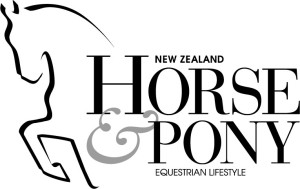 Cambridge-based Alannah Jackson is an accounting student who has competed to 1.30m in show jumping. At the time of our story, she had been riding the impressive 17.1hh eight-year-old Belgium-bred Holsteiner Cralvin Z for nearly a year. ‘Vinny’ was imported to New Zealand as a two-year-old colt and had only recently been gelded.
Cambridge-based Alannah Jackson is an accounting student who has competed to 1.30m in show jumping. At the time of our story, she had been riding the impressive 17.1hh eight-year-old Belgium-bred Holsteiner Cralvin Z for nearly a year. ‘Vinny’ was imported to New Zealand as a two-year-old colt and had only recently been gelded.
Alannah took on Vinny knowing nothing of his history, but soon found out he was well-known on the show jumping circuit for his unruly behaviour. Vinny regularly bucked, reared, napped and dropped his shoulder to spins, which made competing somewhat problematic.
However, he is a talented jumper, and the pair’s first season finished with some double clear rounds at 1.25m.
Alannah says he’s not nasty, but has developed some bad habits that make warming him up and managing him at a show difficult. “I have had to get on him at 6am on the morning of a show, and also ride him the night before,” says Alannah. “He gets up to 90 minutes’ warm-up before going in the ring, and I’ve learned to avoid doing things that make him rear.”
This is the third time Jody and Alannah have worked together to help solve Vinny’s issues. As he warms up, Vinny seems very calm (below) but Jody says this can be deceptive.
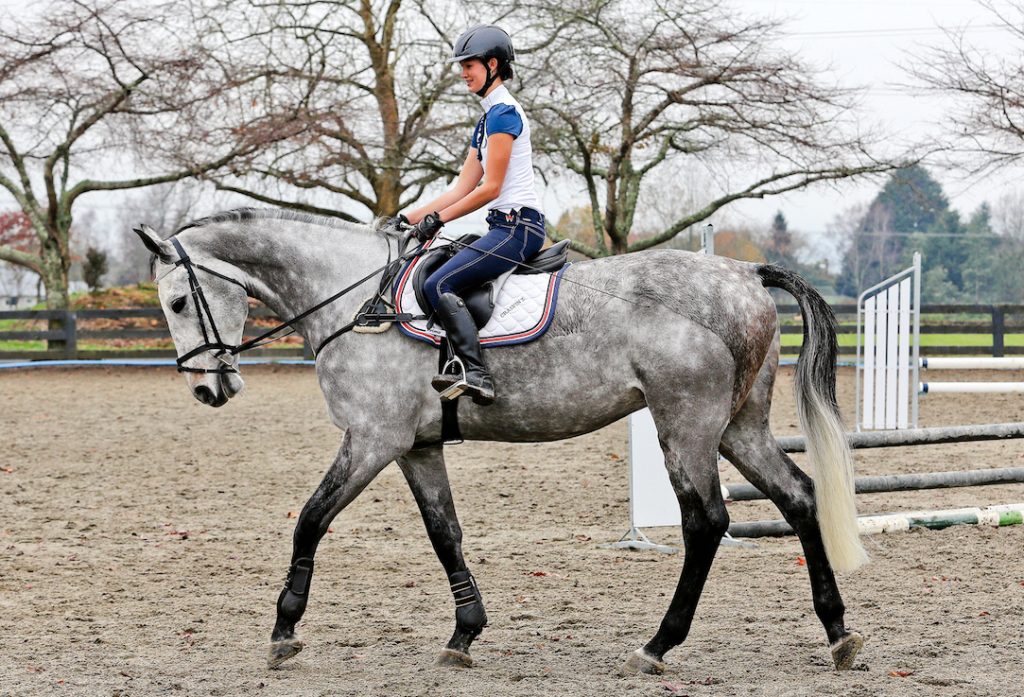
“I look at him and think he’s pretty switched off. He looks like he’s got no issues, but actually he just internalises it all in order to cope. A calm horse isn’t always obedient, but an obedient horse is always calm.”
Jody explains that Vinny’s issue is simply one of confusion – he’s not ‘a bad egg’. “Horses just don’t have the mental capacity to try and have you on. They live very much for the moment and any bad behaviour is just showing what he’s been rewarded for in the past.
“Basically, his brain is wired the wrong way because of his previous experience. He thinks when you say go forward it means he can spin around; he’s basically been allowed to do his own thing.”
Jody uses a dressage whip to help install a ‘go button’. The whip is never used for punishment, but only to motivate the horse to go forward.
From halt, Jody gets Alannah to use the whip behind the saddle with a tap, tap, tap motion until Vinnie walks on. She then halts again and repeats.
Vinnie clearly remembers this exercise, going forward with only light taps. “You can see he’s actually a very sensitive horse, even though before you could kick him with your legs and it was as if he didn’t feel anything,” observes Jody. “People label these horses as dull or lazy, but they’re not – they are often very sensitive, but end up shutting down through confusion.”
Smooth stopping
Now it’s time to check the ‘halt button’ as well. At first when Alannah goes to halt, Vinny snatches on the reins, which doesn’t surprise Jody. “Nearly every horse you see with forward issues has some stop issues as well,” she says.
When Vinny snatches, Jody gets Alannah to take a couple of steps back. At first, Vinny gets a bit upset about the thought of rein-back and briefly thinks about going up in the air. However, once he starts to understand the exercise, and realises there will be a reward (a softening of the reins and a little neck-scratch) for the right answer, Vinny is soon halting much more submissively. Lots of stepping back will make him even softer in the mouth, says Jody.
One important correction Jody gets Alannah to make is not allowing Vinny to look around in the halt. Every time he halts, he must look straight ahead. “Every time you let him turn his head to look, you’re saying it’s okay to pull on one side of the mouth,” explains Jody. “Horses who look around at halt always have turn issues, because they’re grabbing the bit on one side. Don’t let him practise the wrong answer.”
Vinny’s stopping issue becomes more evident when he’s asked to go from trot to halt, and immediately goes crooked and gets panicky (below).
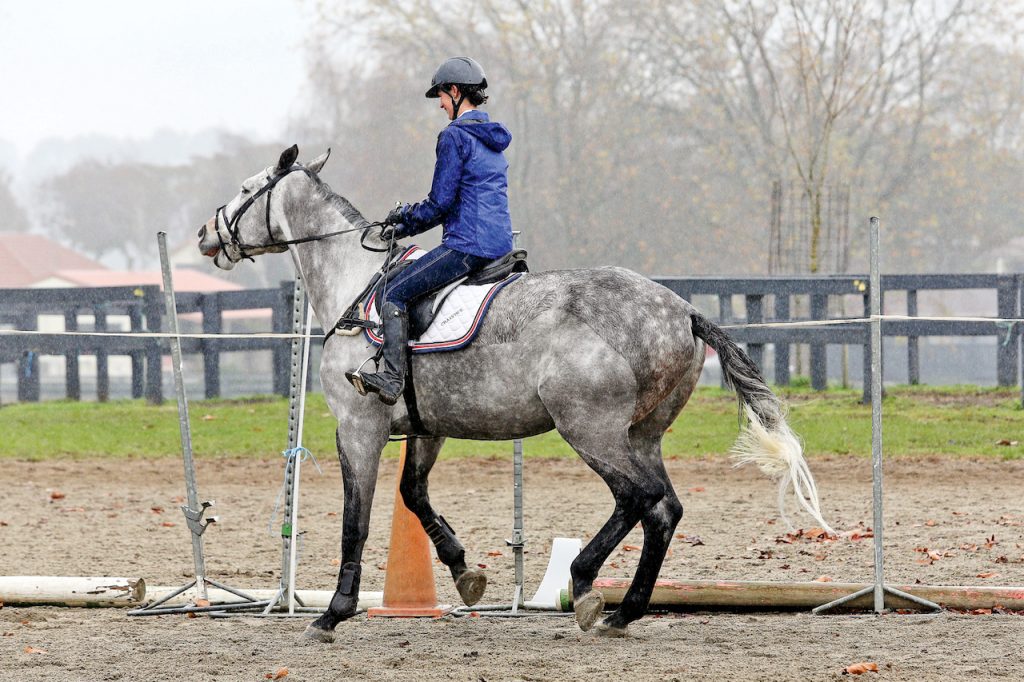
Getting rid of crookedness
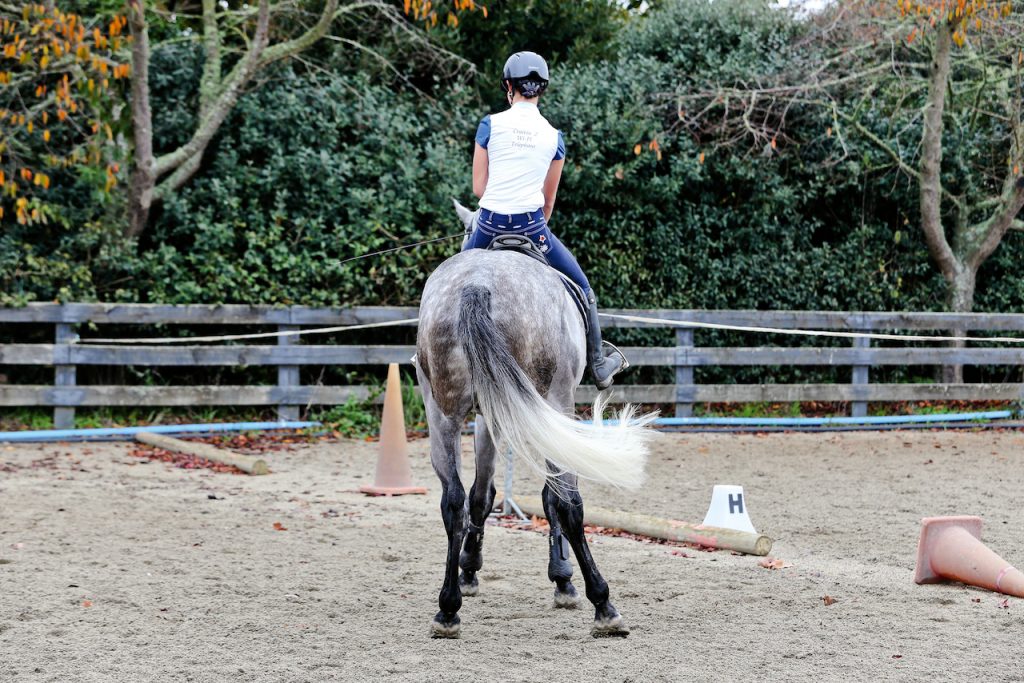 If your horse makes a crooked rein-back like Vinny is doing here, swinging his bum in off the track, it’s important not to try to correct him with your leg, explains Jody. Tempting though it may be to use your inside leg to push his quarters back out, you shouldn’t ever correct crookedness with a leg aid, she says.
If your horse makes a crooked rein-back like Vinny is doing here, swinging his bum in off the track, it’s important not to try to correct him with your leg, explains Jody. Tempting though it may be to use your inside leg to push his quarters back out, you shouldn’t ever correct crookedness with a leg aid, she says.
“The reason his bum swings to the inside is because his inside front foot is driving his shoulders to the outside. Instead of pushing his bum back out, you need to make a little turn step to the inside with the front legs to get him straight again.
“The horse’s brain is wired almost exclusively to the front feet. What you’re seeing with the hindquarters is like a trailer jack-knifing: and you don’t fix the trailer, you fix the drive vehicle.”
Turn, turn, turn
Jody says rearing is basically a more dramatic version of a horse saying: ‘I’m going to go THIS way, thanks very much.’ Fixing the horse’s obedience to the turning aids is the key.
When Vinny rears to the left, it’s to avoid stepping right with his front leg. Most horses only rear one way – though Vinny is pretty adept in both directions.
Jody gets Alannah to ride a square, teaching Vinny to turn off a rein aid. She keeps her outside rein and opens her inside rein, which should prompt the inside leg to step to the inside (below).
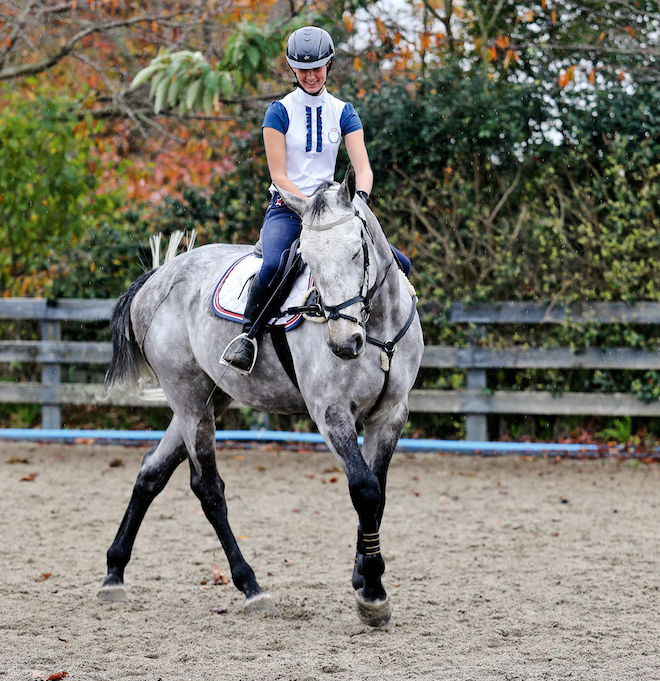
It’s important to hold the outside rein so Vinny doesn’t simply bend his neck to the inside instead of moving his feet. Jody says she sees this a lot in jumping horses when riders use the inside rein only to try to turn – the horse will bend his neck and run out through the shoulder.
A confronting situation
Now that Vinny is more obedient with his upwards and downwards transitions, as well as his turns, it’s time to head out of the arena to put him in some more testing situations, while letting him know the rules still apply.
Vinny walks quietly past his float out to the lane nearby, which in itself is a massive achievement, as once he would have napped back to the float, bucking and rearing when asked to leave it.
And sure enough, it doesn’t take long for Vinny to decide the lane is a spooky place. He starts to walk in a wavy line, then panics and the bad behaviour starts (below).
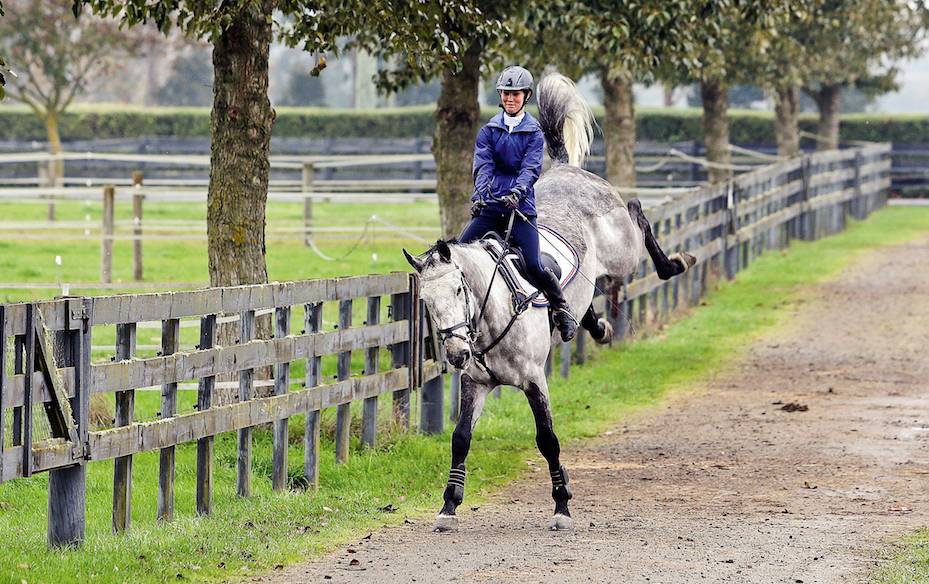
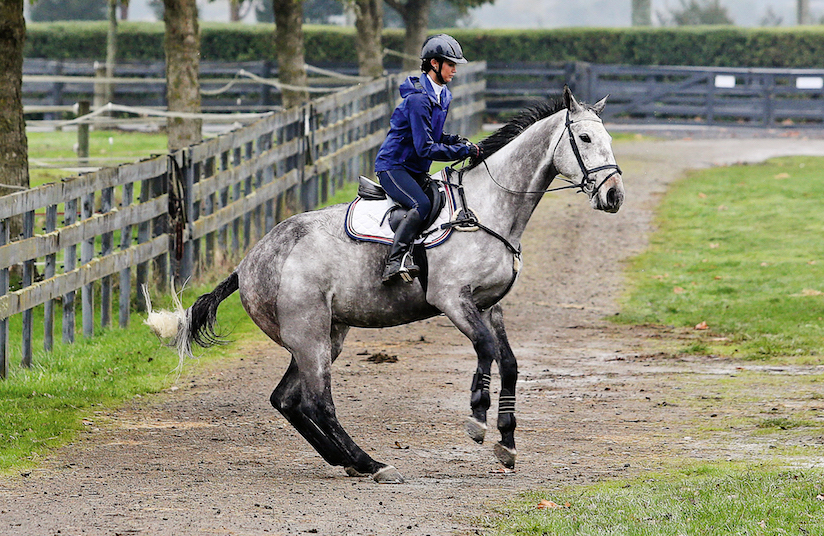
“Probably part of the issue is nobody had enough control of him before they hacked him out,” says Jody, “So if he was scared of something he would just do his own thing.”
To correct the behaviour, Jody tells Alannah to halt Vinny the second she feels him start to go crooked – and he’s not allowed to spin around. Jody says that keeping him straight and looking in the right direction is the first step. Then, once he’s standing still, Alannah can ask him to go forwards with a whip tap.
When he steps forwards, she really praises him, stroking his neck (below).
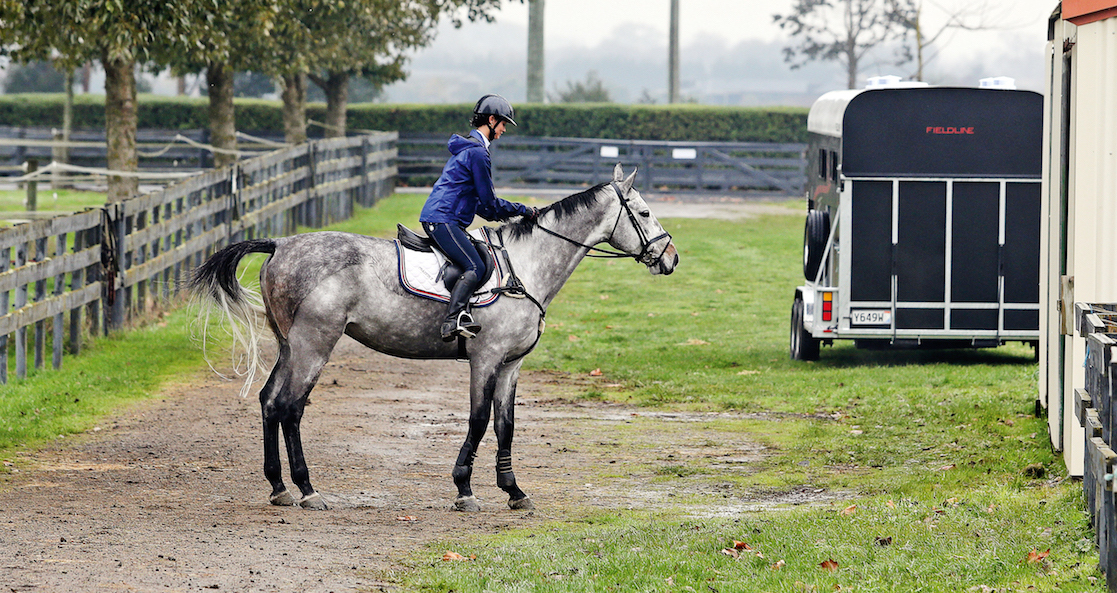
Jody uses the same technique for getting Vinny to approach a scary blue tarpaulin. When he goes to rear left to get away, Jody tells Alannah to tug her right rein, and turn him back to the right. “The basic correction for rearing is to give a tug on the way up in the rear, leave him alone at the top of the rear because we don’t want him to tip over, and try not to tug him on the way down because we want to reward him for coming down. Then the moment he comes down you need to make the turn step.”
Alannah gets Vinny to stand still facing the tarpaulin, and then she’s able to ask him to take a step forward, and give him a nice scratch on the neck for making the right decision.
Jody says when you know your horse is in a situation where he could start making the wrong decisions, it’s fine to stop for a moment to give him a second or two to think it through.
“All you’re really trying to do is get more correct answers than wrong answers. If you were going to put it into human terms, Vinny’s a bit like a dyslexic kid who’s been told he’s stupid his whole life and has been punished for getting things wrong. We are now trying to explain things to him slowly and carefully in a way he can understand, and tell him he’s a great guy when he gets it right. He hasn’t really had anyone say he’s a good guy before.”
Finishing on a high note
It’s a much a happier and more confident Vinny who heads back down the lane towards the float, having conquered his fears (below).
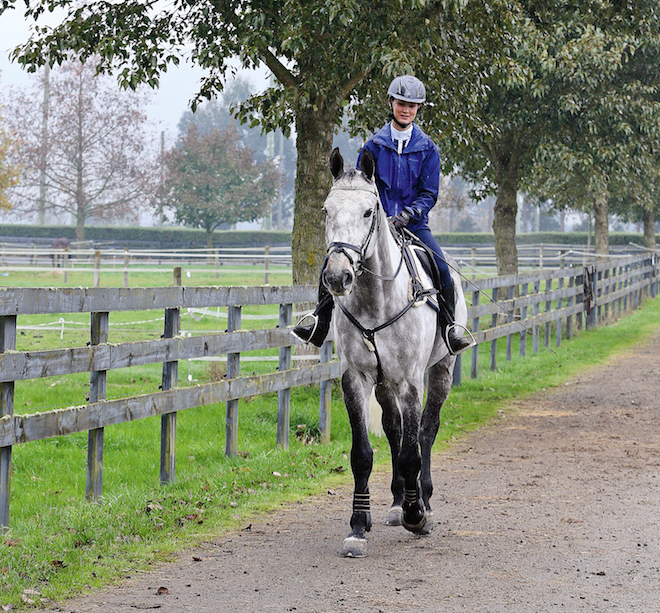
Alannah then takes him back into the arena to finish with a few jumps, which is another triumph. Where once Vinny would have napped and reared and not gone past his float again, he walks quietly back on to the arena, and happily pops a few fences. They are little jumps for this big scopey horse, but Alannah and Jody are thrilled with his attitude (below).

“I’ve got a really good feeling about him,” says Jody. “Alannah is non-aggressive and a very capable rider. And she’s not scared of him. When you’re scared, you start making wrong decisions and just clinging on when they do something wrong.
“If Alannah can learn the skills to deal with these type of horses, she’ll have a career in fixing them because most people can’t – they just try and use brute strength, rather than riding smarter.”
Attachment theory
Alannah absolutely adores her horse and prior to meeting Jody her approach was pretty much to be kind to him in the hope he would eventually do what she wanted!
“I did try giving him a smack with the whip but that was not going to get us anywhere – the harder you hit him, the harder he bucks,” explains Alannah. “So the way I managed was to say okay, you rear, that’s fine, and then give him a pat and he would go forward. He’s my best friend.”
Although Alannah’s ideas don’t sound very scientific, Jody explains that building up a bond with your horse, otherwise known as ‘attachment theory’, is actually an important part of training.
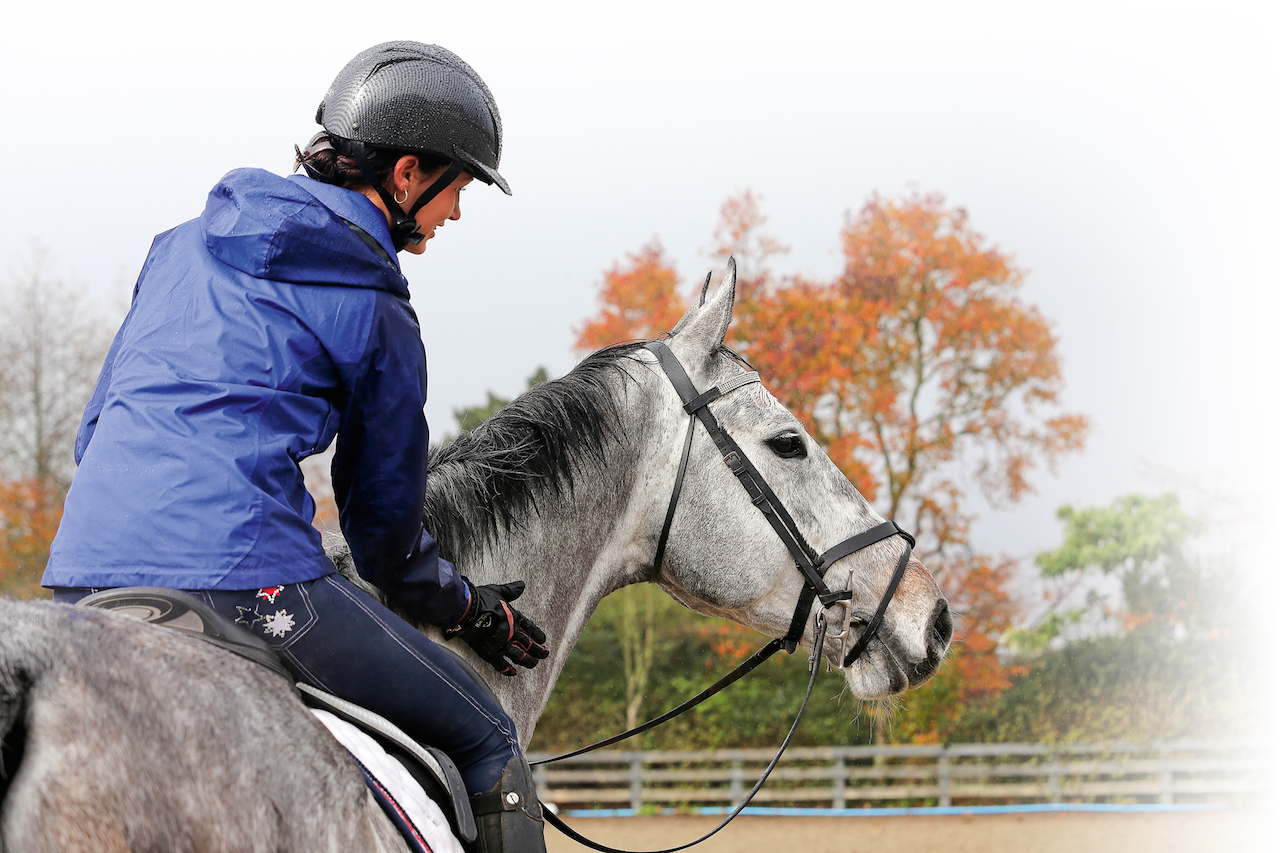
“Horses find security through touch – it is proved to lower heart rate. If a horse is nervous, it can be soothed by the touch of another horse, or even a human. Touch is a major antidote for insecurity.”
But of course, loving your horse isn’t enough. Alannah also needed to learn some new ways to communicate effectively with Vinny so he can give the right answers to the aids 100% of the time and thus become a secure and happy horse.
The rule of three
When training an exercise, if your horse gives three correct responses in a row, it’s time for a break. The reason for this is that one correct answer could be a fluke, and two correct answers could be two flukes, but three in row means you’ve started the chain of learning in his head.
“One of the mistakes people make is they get one correct answer and think, ‘Oh, that’s good, he knows it now,’ and leave it,” Jody says. “Or else they keep on and on to the point where the horse just zones out. If you can get three good answers in a row, then give the horse a break, normally for about a minute, which allows the brain and body to recover.”
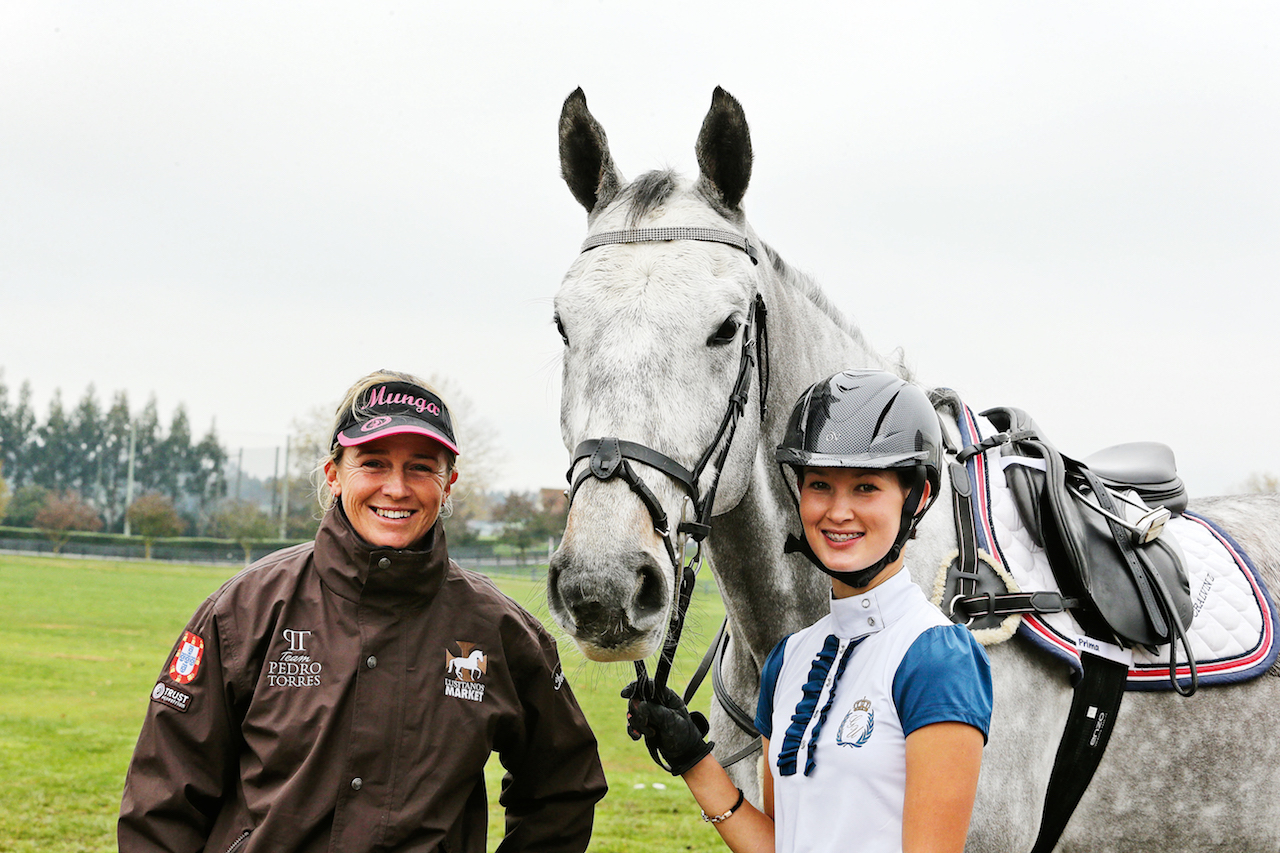
About our trainer: Raglan-based Jody Hartstone specialises in training young or ‘problem’ horses. Jody’s system is based on the methods developed by Australian behavioural scientist Dr Andrew McLean. The McLean method revolves around eliminating conflict behaviour in horses (such as bucking, rearing, napping, tension or dullness) caused by the rider’s unclear aids, and reinstalling clearer aids.
- This story was first published in the September 2014 issue of NZ Horse & Pony

